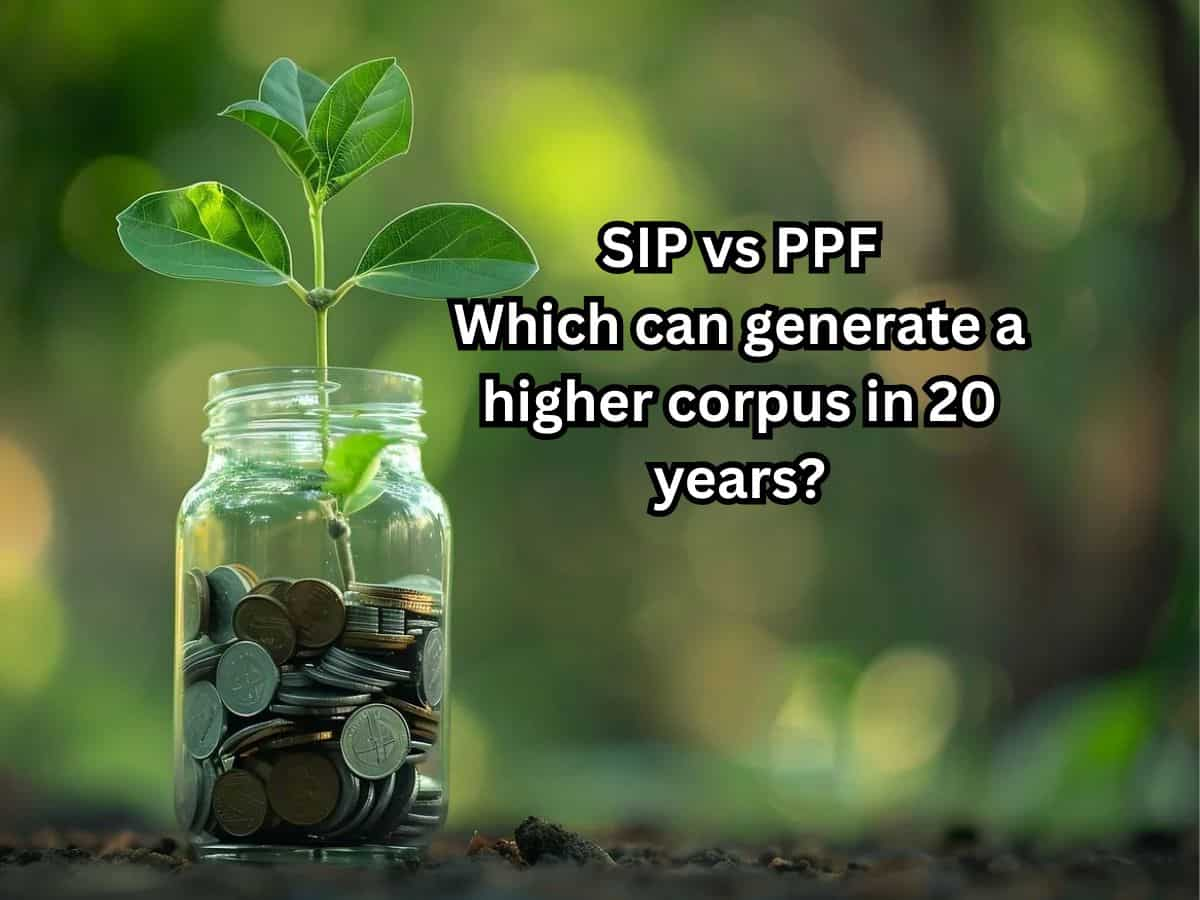If you are wondering where to invest – SIP or PPF – to generate a sizeable corpus, you are not alone. Many of us are confused about the various investment options. In this context, we will compare SIP and PPF to help you decide which one can generate a higher corpus with an investment of Rs 1,45,000 per year for 20 years. We will use calculations to illustrate our points.
What is Systematic Investment Plan (SIP)?
SIP is a process of investing a fixed amount in mutual funds. Individuals can invest daily, monthly, quarterly, or yearly in a mutual fund scheme.
What is PPF?
Public Provident Fund is a government-backed retirement scheme that is eligible for tax deductions under Section 80C of the Income Tax Act.
What is minimum amount to invest in SIP?
The minimum amount to invest in every mutual fund varies. Thus, there is no definite minimum investment amount, but some funds offer a minimum investment amount as small as Rs 100.
What is minimum and maximum amount to invest in PPF?
The minimum deposit in a year is Rs 500, whereas the maximum limit is Rs 1.5 lakh.
How does SIP work?
- Investors select a mutual fund that aligns with their investment goals and risk tolerance.
- Once a scheme is chosen, an SIP is set up with a specific investment amount and frequency (e.g., monthly, quarterly).
- The agreed-upon SIP amount is automatically deducted from the investor’s bank account at the pre-defined intervals.
- The deducted amount is invested by the fund manager in the chosen mutual fund scheme, resulting in a specific number of units (or shares) being allocated to the investor.
- The value of these units increases as the fund’s Net Asset Value (NAV) increases, leading to growth in the investor’s SIP investment over time.
- Investors can choose to withdraw their accumulated wealth at the end of the SIP tenure or at periodic intervals.
How does PPF work?
- You can start with a minimum deposit of Rs 500 per financial year.
- Maximum Deposit: The maximum annual deposit limit is Rs 1.5 lakh.
- Flexibility: You can deposit in a lump sum or installments.
- Tax Benefits: Deposits are tax-deductible under Section 80C of the Income Tax Act.
Interest rate in PPF
Currently Public Provident Fund is offering an interest rate of 7.1 per cent.
Annualised return
Since there are no fixed returns in SIP investment, we are calculating as per annualised returns of 8 per cent (debt fund), 10 per cent (equity fund), and 12 per cent (hybrid fund).
PPF calculation conditions: Rs 1,45,000/year investment for 20 years
Yearly investment: Rs 1,45,000 (monthly investment Rs 12,083x 12 months)
Time period: 20 years
Rate of interest: 7.1 per cent
PPF: What will be your retirement corpus in 20 years with Rs 1,45,000/year investment?
On a Rs 1,45,000/year investment, the retirement corpus in 20 years will be Rs 64,36,345. The estimated total interest during that time will be Rs 35,36,345.
SIP investment conditions
Since there are no fixed returns in SIP investment, we are calculating as per annualised returns of 8 per cent (debt fund), 10 per cent (equity fund), and 12 per cent (hybrid fund). We’re also assuming a monthly investment of Rs 12,083(1,45,000/12)
SIP: What you can get on Rs 12,083 monthly investment for 20 years (hybrid fund)
At 12 per cent annualised growth, the estimated corpus in 20 years will be Rs 1,11,14,636. During that time, the invested amount will be Rs 28,99,920, and estimated capital gains will be Rs 82,14,716.
SIP: What you can get on Rs 12,083 monthly investment for 20 years (equity fund)
At 10 per cent annualised growth, the estimated corpus in 20 years will be Rs 87,47,932. The estimated capital gains will be Rs 58,48,012.
SIP: What you can get on Rs 12,083 monthly investment for 20 years (debt fund)
At 8 per cent annualised growth, the estimated corpus in 20 years will be Rs 69,19,451. The estimated capital gains will be Rs 40,19,531.
Anurag Dhole is a seasoned journalist and content writer with a passion for delivering timely, accurate, and engaging stories. With over 8 years of experience in digital media, she covers a wide range of topics—from breaking news and politics to business insights and cultural trends. Jane's writing style blends clarity with depth, aiming to inform and inspire readers in a fast-paced media landscape. When she’s not chasing stories, she’s likely reading investigative features or exploring local cafés for her next writing spot.






